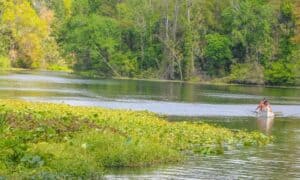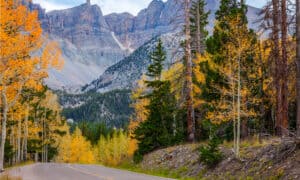Yellowstone National Park is home to an abundance of wildlife, both harmless and dangerous. It was established in 1872, making it the first national park in the world. The park has 2.2 million acres of beautiful landscape in Montana, Wyoming, and Idaho. Within the vast landscape, there are hundreds of animal species and unique geological features.
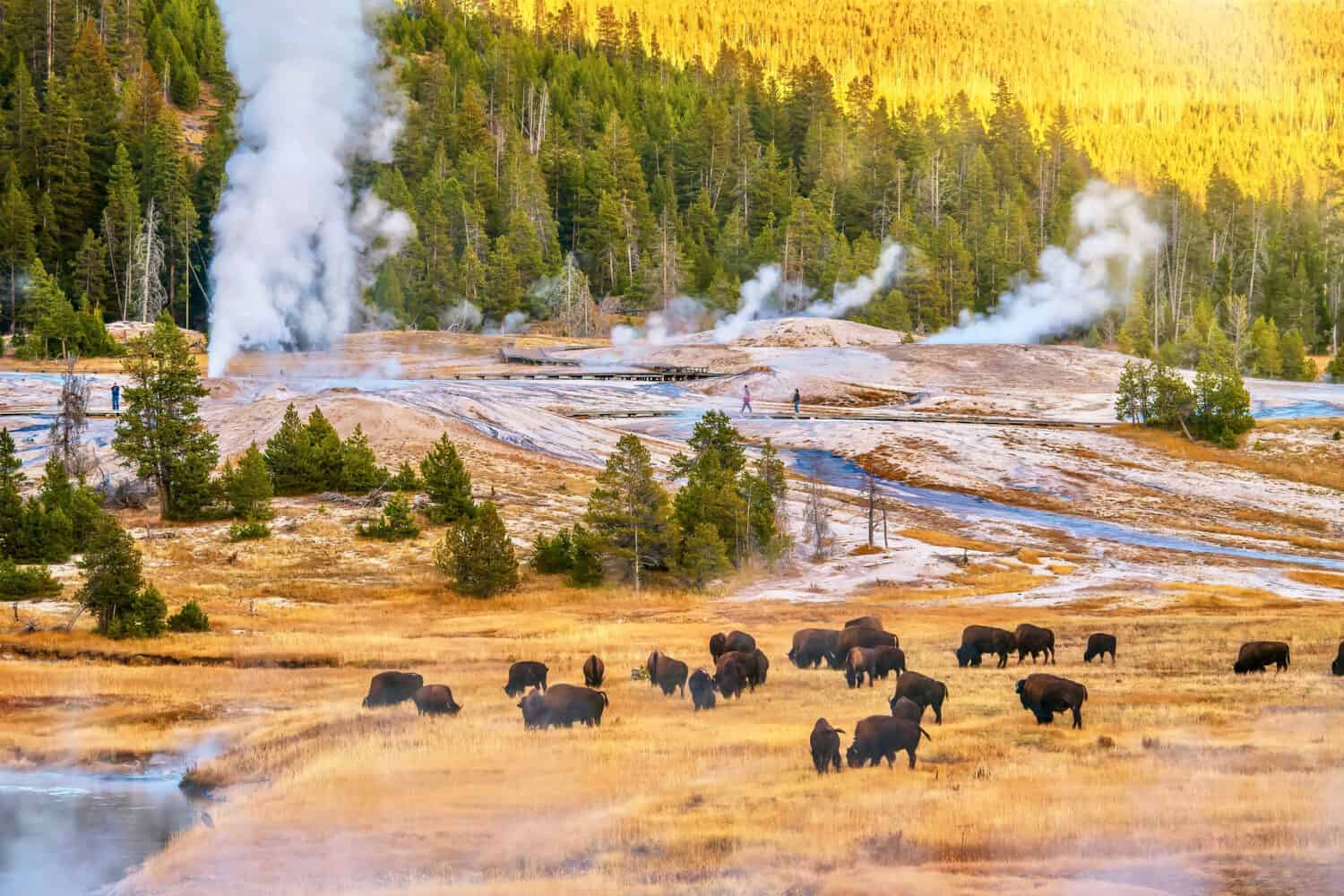
Yellowstone is bigger than Rhode Island and Delaware combined.
©CherylRamalho/Shutterstock.com
With over 4 million tourists flocking to the park each year, park rangers urge the visitors to respect the wildlife. It is always wise to be aware of the dangerous animals residing in the park. Although the most dangerous animals in Yellowstone are larger mammals, a few birds and flying insects also pose a threat.
Is Yellowstone Dangerous?
Like many wilderness areas in the world, Yellowstone National Park has its fair share of dangers. It is an absolutely beautiful place to visit, but the area can quickly become deadly to those who behave carelessly. The park’s geysers, hot springs, lakes, and wildlife claimed over 100 lives. This makes Yellowstone one of the most dangerous parks in America.
The Most Dangerous Flying Animals in Yellowstone
1. Peregrine Falcon
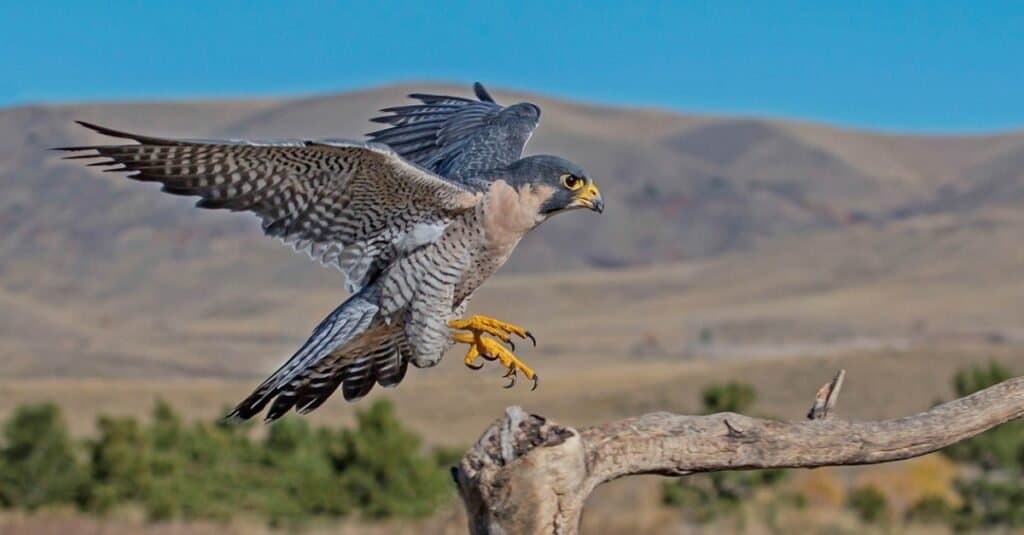
Peregrine falcons live on every continent in the world except for Antarctica.
©iStock.com/DawnKey
A Peregrine falcon is about the size of a crow making it one of the largest falcons in the United States. It is also the fastest-moving animal in the world, diving at a speed of 240 miles per hour. This fierce predator has a large wingspan, sharp talons, and a strong, hooked beak.
Peregrine falcons prey on many other birds, such as shorebirds, ducks, and pigeons. They also eat insects, rodents, and bats, but not as often.
There are no reported human deaths caused by peregrine falcons, but serious attacks can occur. Like many birds, the falcons will attack humans who wander too close to their nests.
2. Great Horned Owl
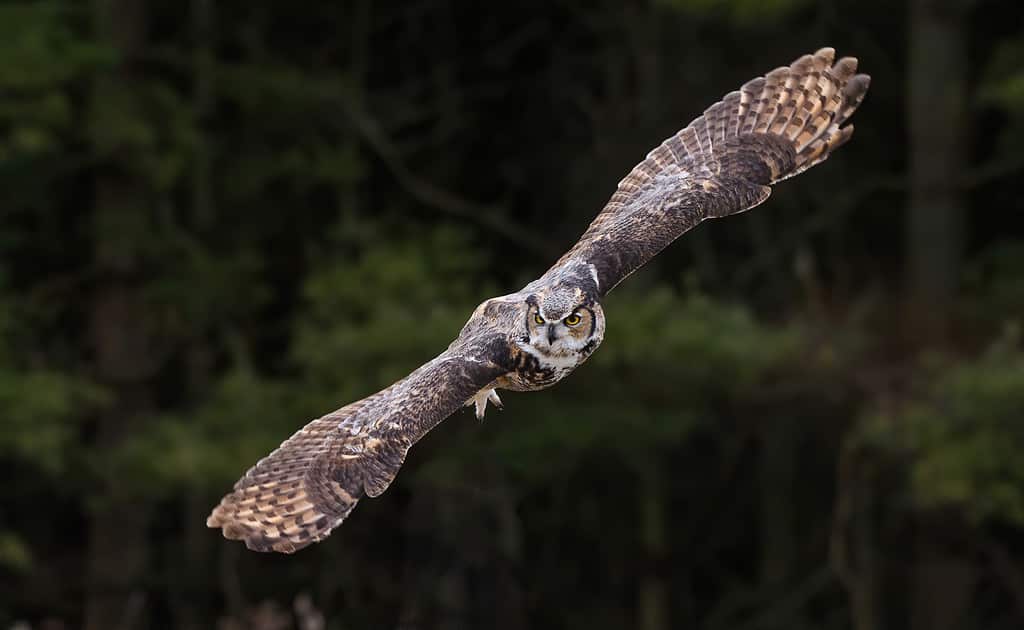
A great horned owl’s talons require a force of 28 pounds to open. The deadly grip is used to kill prey.
©yongsheng chen/Shutterstock.com
Great horned owls are the classic storybook owl with large yellow eyes, pointed ear tufts, and a deep hoot. They are immensely powerful predators that range in height from 17-25 inches. Their wingspan can reach up to 5 feet, and they weigh about 3-5 pounds.
These owls have a majestic aura about them, but they can also be quite intimidating. The great horned owl feeds on small birds and mammals such as rodents, rabbits, and marmots. They are also known to prey on and kill animals that are much larger than them.
Humans should keep a respectful distance when they see a great horned owl. Owls will attack when they detect a threat to their nests, young, or territory. Although there are no reports of a great horned owl killing a human, there are several instances when they have attacked and caused serious injuries.
3. Silver-haired Bat

Silver-haired bats are one of the slowest flying bats in North America.
©Jay Ondreicka/Shutterstock.com
The silver-haired bat is a solitary nocturnal tree bat that feeds on soft-bodied insects, including ants, mosquitoes, and spiders. It has brown or black fur with silver tips and a wingspan of 10-12 inches. These bats start foraging earlier in the evening than most other bat species.
Healthy bats do not attack humans, and rabid bats are rarely known to be aggressive. Most bats do not have rabies, but a form of rabies linked to silver-haired bats has killed a few people in North America.
4. Mosquito
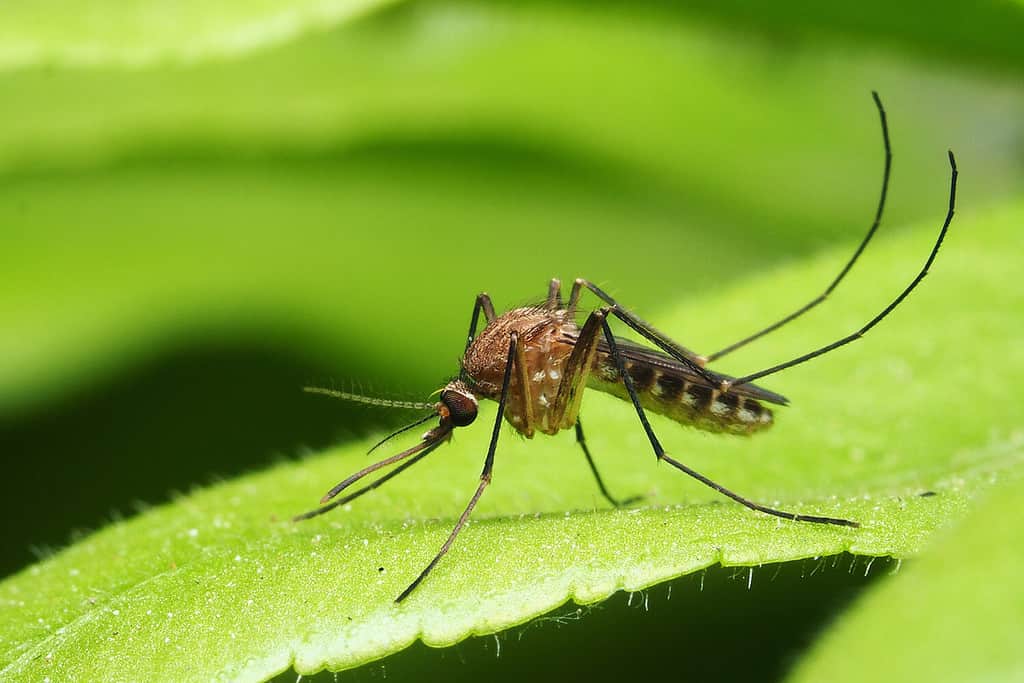
Only female mosquitos bite humans and animals.
©jiade/Shutterstock.com
There are about 2,700 species of mosquitoes throughout the world and 176 species in the United States. They are traced as far back as the Triassic period – 400 million years ago. These pesky insects suck about 5 millionths of a liter of blood each time they feed. People who produce a lot of lactic acid and CO2 attract more mosquitoes.
Although the majority of mosquitoes in the United States do not carry any harmful diseases, some species can transfer deadly diseases to humans. Some of the mosquito borne-diseases in the U.S. include malaria, West Nile Virus, and dengue. The West Nile Virus has been detected in every county in Wyoming. So, it is important to wear protective clothing or insect repellant while exploring Yellowstone.
5. Giant Water Bug
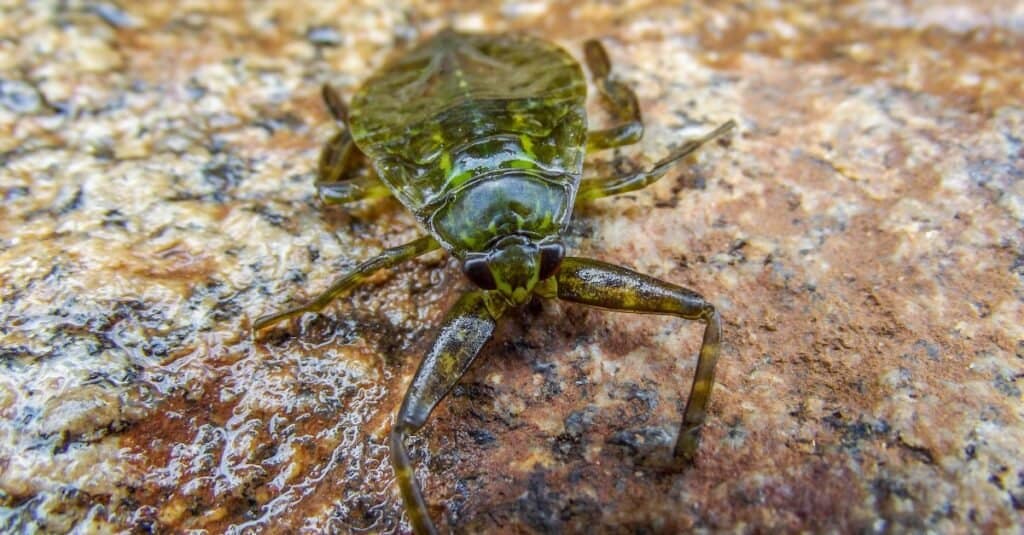
Often hiding in vegetation under the water’s surface, giant water bugs are also called electric light bugs or toe-biters.
©iStock.com/Eric Kukulowicz
Giant water bugs are found in the lakes and rivers in Yellowstone. They are usually hidden in vegetation under the surface of the water. The six-legged bug catches its prey with its two front legs and swims with its hind legs. Giant water bugs kill their prey by injecting venomous saliva and sucking their prey’s liquified flesh. The voracious predators feed on a variety of prey, including tadpoles, small fish, and frogs.
Although giant water bugs are mostly found in bodies of water, they can also be spotted flying to new aquatic habitats or flying toward artificial lights at night.
Giant water bugs are unlikely to bite humans when unprovoked. However, they may sneak up on people in the water and bite their toes. Its bite is nontoxic but extremely painful. It can also result in a non-life-threatening allergic reaction.
Summary of the 5 Most Dangerous Flying Animals in Yellowstone
| Rank | Animal |
|---|---|
| 1 | Peregrine Falcon |
| 2 | Great Horned Owl |
| 3 | Silver-haired Bat |
| 4 | Mosquito |
| 5 | Giant Water Bug |
The photo featured at the top of this post is © iStock.com/makasana
Thank you for reading! Have some feedback for us? Contact the AZ Animals editorial team.





